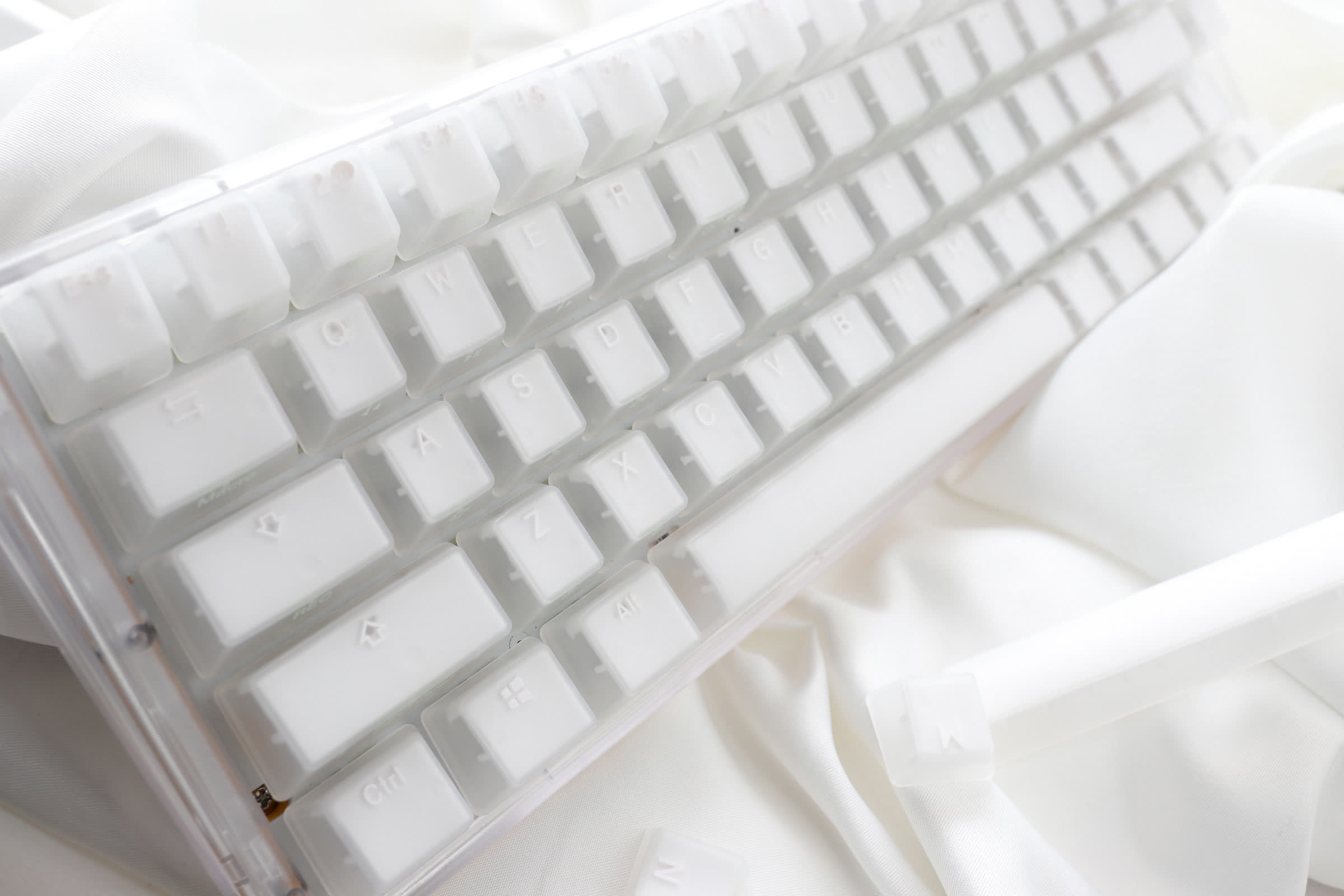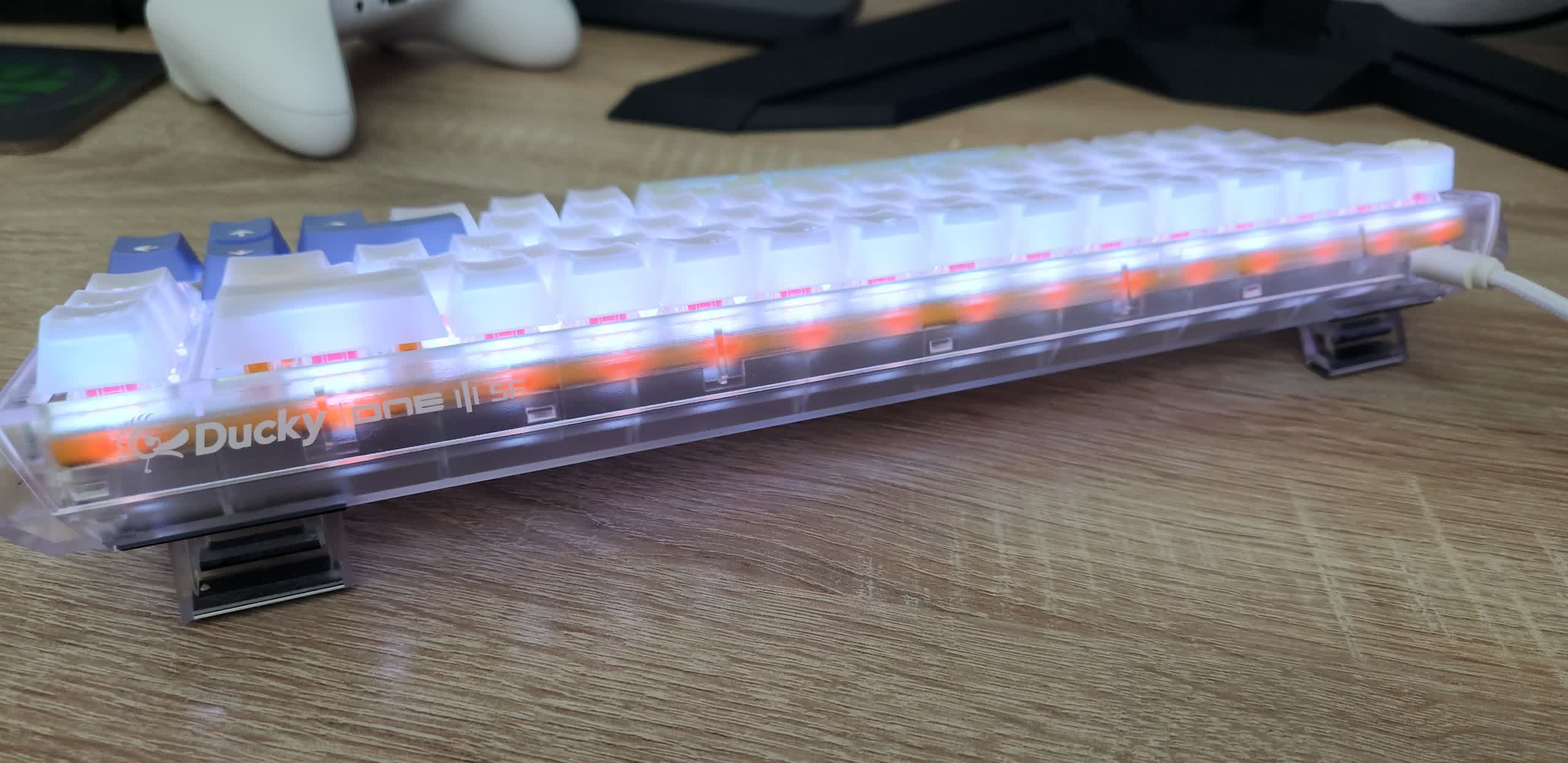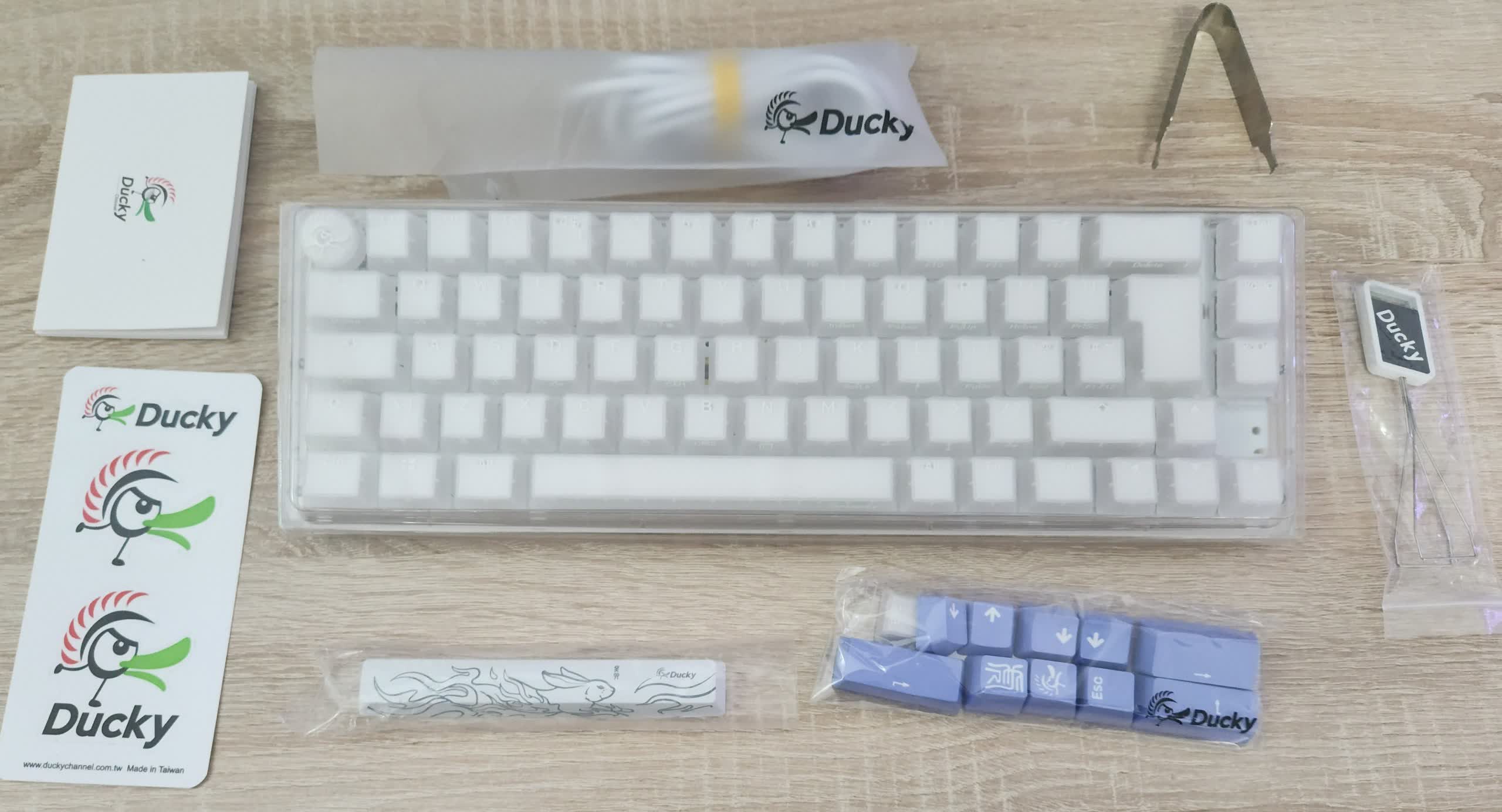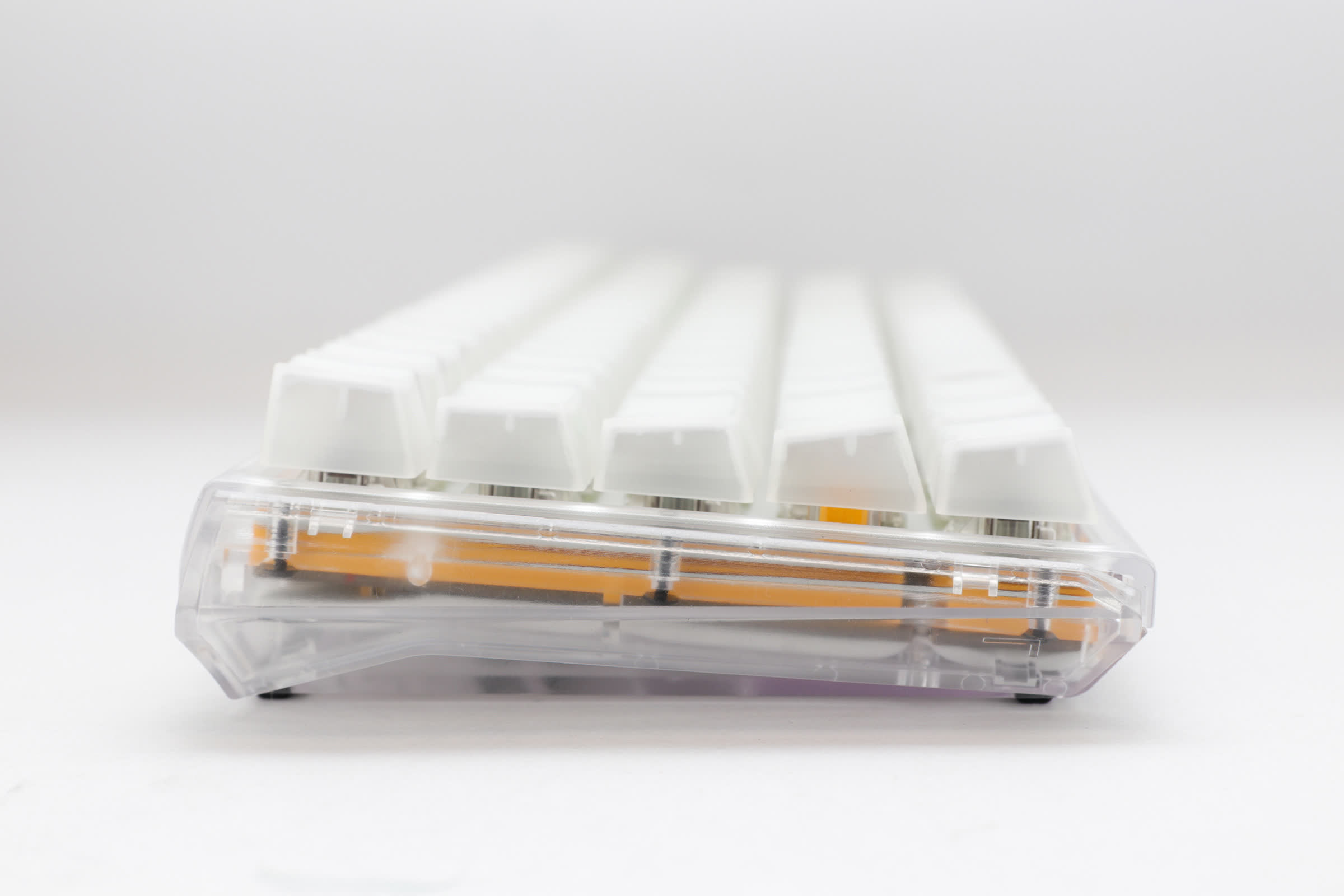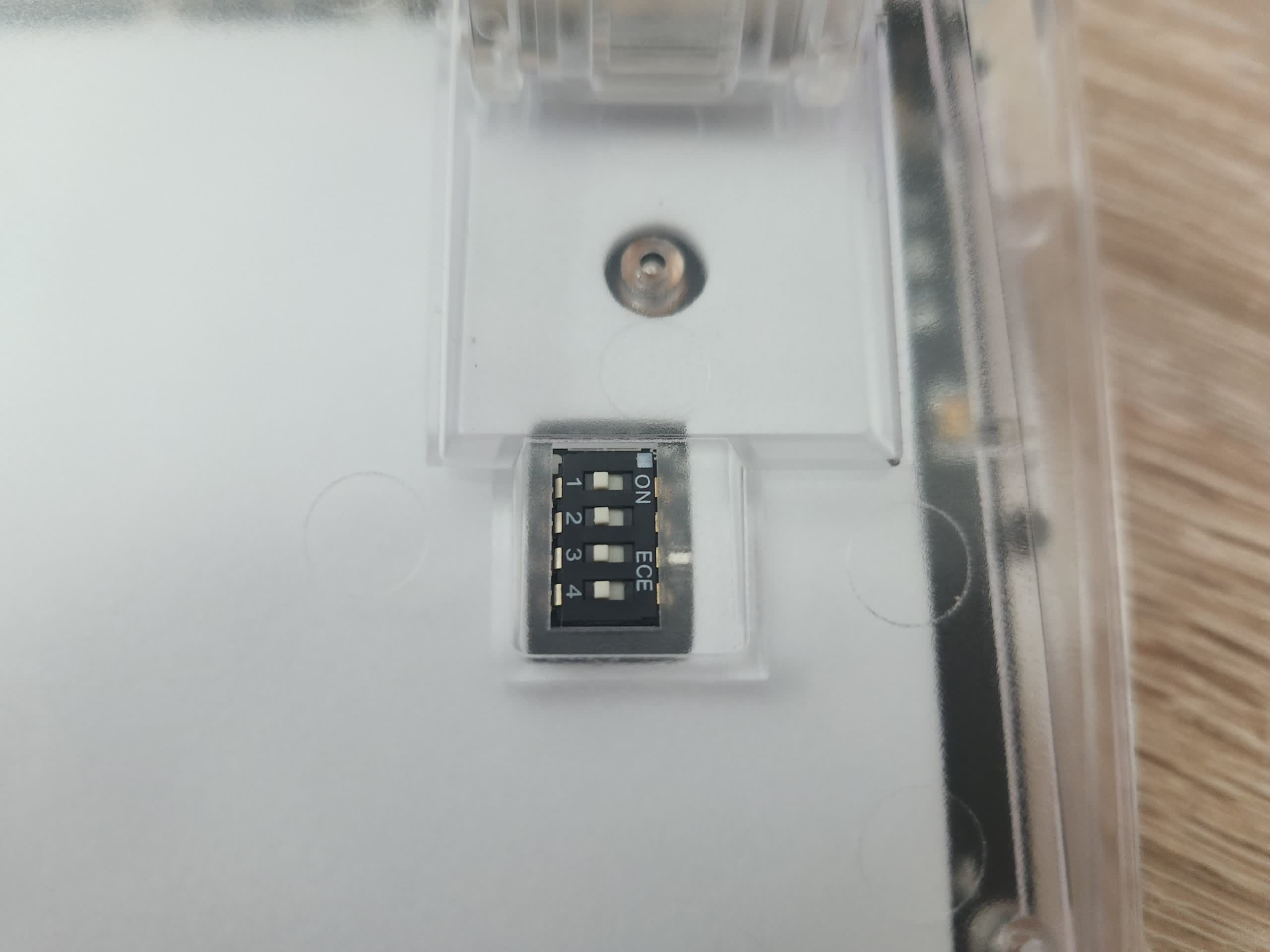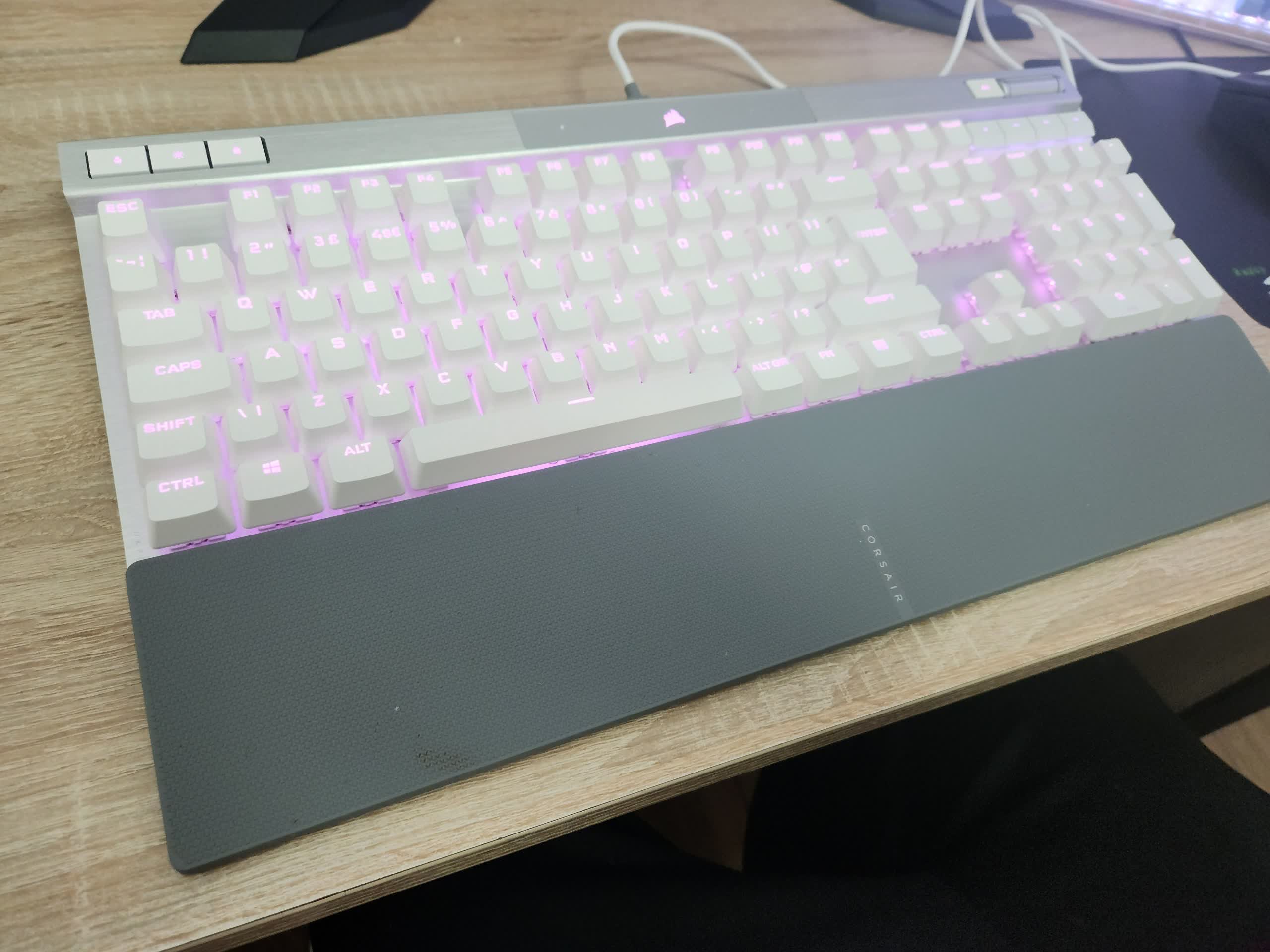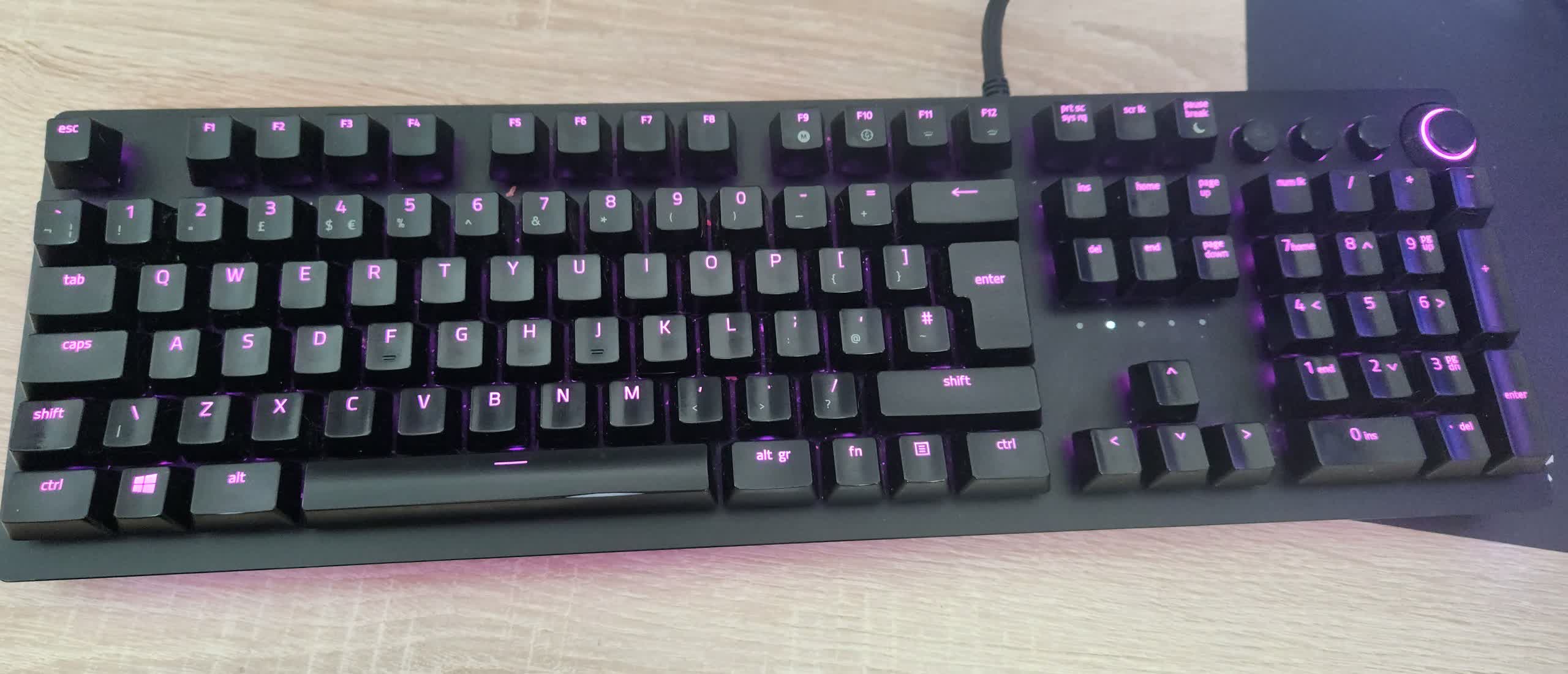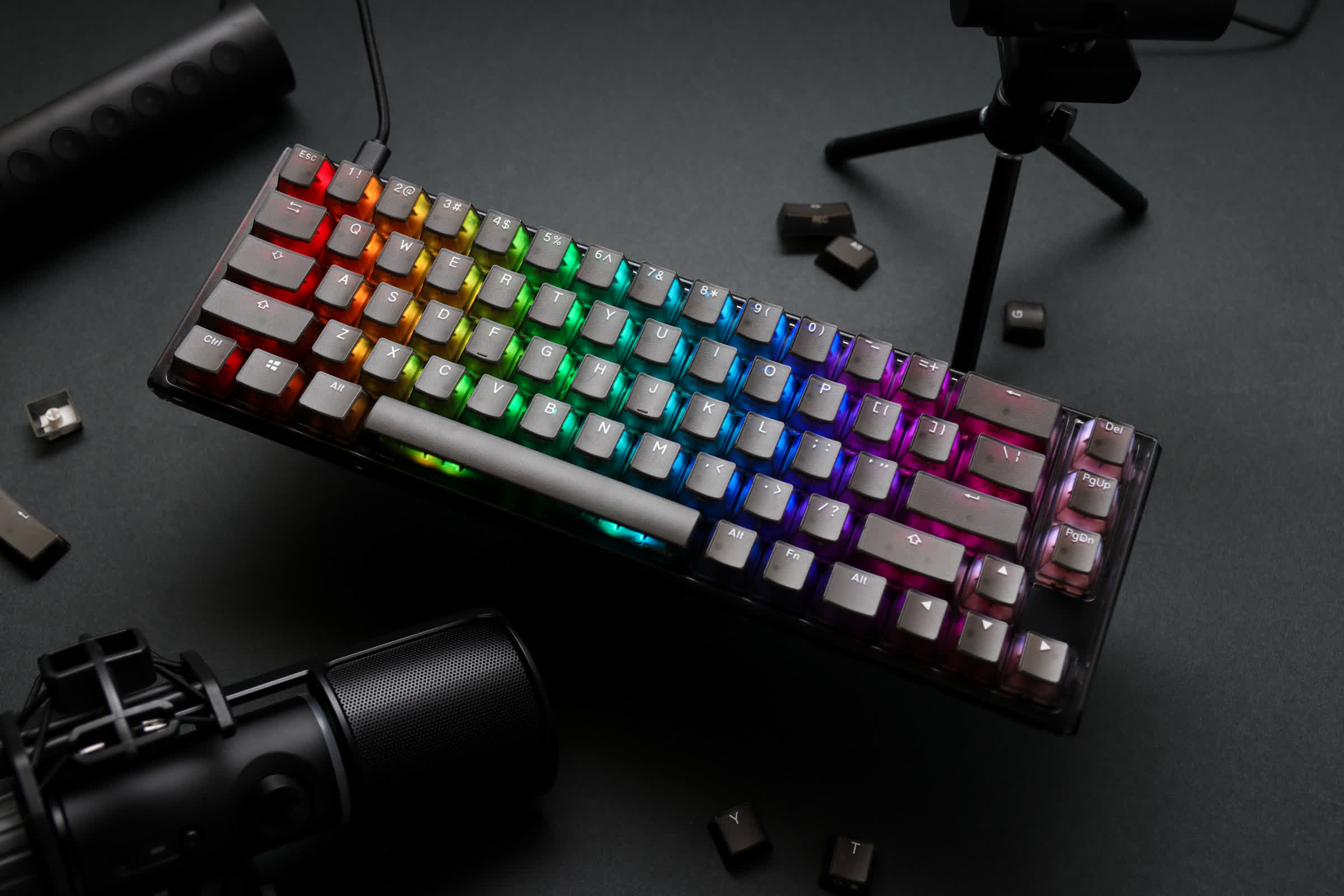Choosing a new keyboard is not easy. The array of available options is overwhelming, with several key factors to consider. What will its primary use be? How much are you willing to spend? Are there any essential features you're seeking? These considerations signify that the 'perfect' keyboard isn't the same for everyone. The Ducky One 3 SF Aura might not be the perfect keyboard for me, but it's the closest any has ever come.
While I spend a lot of time gaming, my main consideration when it comes to a keyboard is how good it is for typing. Over the years, I've experimented with different models and a variety of switches. However, I had never used a Ducky, despite their reputation for being great for typists and the constant appearances in 'Best Keyboard' lists. Why? Somewhat shamefully, I just didn't think they looked that good.
The Ducky One 3 SF Aura doesn't come with as many elaborate extras as the Asus ROG Azoth wireless keyboard, but then its $140 price compares very favorably to Asus' $250 monster, and it still offers more than some rivals: 12 alternate keys, including a very snazzy spacebar; a switch puller, a keycap remover, USB-C to USB-A cable, and the obligatory stickers.
This keyboard is a small-form-factor (65%) version of the One 3 Aura, which means you still get the arrow keys, Del, PgUp, and PgDn - it's also available in standard, TKL, and Mini (60%) sizes.
The unique design comprises a frosted plastic translucent body and translucent switches, letting you see the yellow foam that dampens the keystrokes, along with some of the dual-layer PCB, from the sides.
The top of the keycaps are opaque, so while it's not completely transparent, it does remind me a little of the very stylish transparent-backed Nothing Phone (1).
Because the sides of the double-shot keys are also translucent, the RGB lighting comes flooding out at all angles rather than just lighting up the legends like most keyboards.
The end result is that this is the brightest keyboard you're ever likely to see; you could warn ships away from rocks at night with this thing. The brightness can also make taking photos difficult, sadly.
The way the Ducky illuminates the keys and everything else around the board in a dim room is great, but the legends are hard to see when the backlighting is activated, especially in bright areas. But then this brand of keyboards is aimed more at touch typists, so those who occasionally need to look at the keys could have a few issues. An example is the ampersand on the 7 key that makes it look like an 8 from a distance.
It's nice to see that Ducky One SF Aura offers three typing angles rather than two, something that a lot more keyboards are doing these days, but you won't find the likes of media controls, volume knobs, LCD screens, ports, or dedicated macro buttons here.
There are, however, a set of DIP switches underneath. Toggling them performs different functions: locking the number keys as F1 – F12, enabling 6-Key Rollover mode, and changing the Windows key to the Menu key.
As expected, users can choose from a wide range of switches - Cherry MX, Kailh, and Gateron, so you can pick your favorites. The review model I received features Cherry Silent Reds, for which I'm grateful. They're also hot-swappable, so you can change them if you're not happy with your choice.
As the name suggests, the Cherry Silent Red linear switches are extremely quiet apart from the satisfying thump when they're depressed. They offer around 1.9mm of pre-travel, actuating at 45g at 2mm with 3.7mm of total travel. Combined with the thick, polycarbonate plastic keycaps, I can honestly say this keyboard offers the best typing experience I've ever enjoyed, better even than the Asus ROG Azoth.
But I want empirical evidence, so I turn to the typing test to see how it fares against three competitors: the Corsair K70 with optical-mechanical switches, the Asus ROG Azoth with its ROG NX Red switches, and the Razer Huntsman Elite with Razer Clicky Optical Switches.
The Ducky is up first. Heading to Typing.com, I select the 1-minute test and manage to reach 82 words per minute, a personal best, with 100% accuracy.
Next is the Corsair. This is a great-looking keyboard, and the keys are even quieter than the Ducky, but I do find that the opto-mechanical switches activate so easily that I often make errors.
It's also annoying when I accidentally cast an Ultimate in Diablo 4 because of the tiny bit of pressure my finger exerted while resting on the '4' key. I score 67 words per minute with 85% accuracy; I noticed when using this keyboard every day that the key I hit most often was backspace.
Onto the satisfyingly clicky Razer Huntsman Elite. This was my keyboard of choice for years, as illustrated by the heavily worn wrist rest. Not too surprisingly given my experience with this one, accuracy is 99% while speed is 78 wpm.
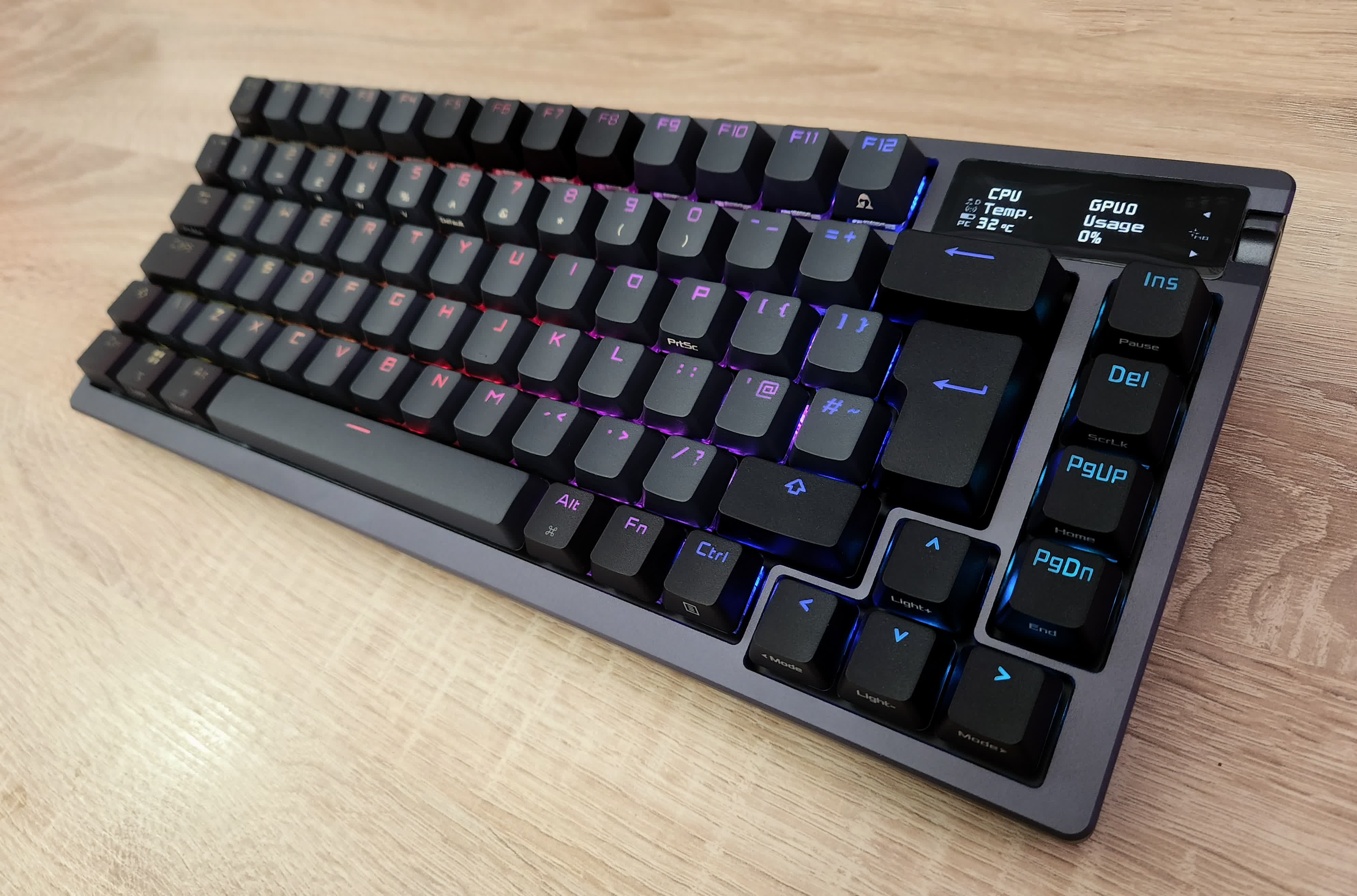
Finally, it's time for the most expensive of the bunch: the expensive ROG Azoth. Its ROG NX Red Switches aren't as clicky as the Huntsman, but they produce more noise than the other two. I praised the typing experience of the Azoth in my review, so I'm expecting it to perform well. The end scores are 100% accuracy and 78 wpm.
Keyboard/switch speed and accuracy comparison
| Keyboard | Switch type | Words per minute | Accuracy |
| Ducky One 3 SF Aura | Cherry Silent Red | 82 | 100% |
| Corsair K70 | Optical-mechanical | 67 | 85% |
| Asus ROG Azoth | ROG NX Red | 78 | 100% |
| Razer Huntsman Elite | Razer Clicky Optical Switches | 78 | 99% |
The results are pretty close to what I expected, and confirm that, at least in my case, the Ducky offers the best accuracy and typing speed. Fingers just seem to glide over its keys without hitting the wrong one or any accidental activations, and the feeling of pressing each key is unrivaled. Its reputation for being a typist's keyboard is well deserved.
But that doesn't mean the Ducky isn't also suitable for gaming. The keys are responsive enough for all genre types and comfortable when resting your fingers on them, without any accidental presses. There's also the RGB, of course, and the fact it's quite small means you can place the keyboard in various locations to give yourself extra mouse room. It's also very portable, which is great if you intend to travel with it. But some people are going to prefer keyboards packed with gaming-focused features.
The majority of the Ducky's keys have secondary functions printed in green on their south side. There are the usual buttons you'd find on a full-size keyboard – Insert, Pause, PrtSc, etc. – as well as all the media keys, lighting controls, and more.
That brings us to one of Ducky's defining features: there's no software for controlling the lights and macros.
Those used to the likes of Corsair iCue and Asus Armoury Crate might be surprised by this, but then a lot of lighting software is truly awful, so others might see it as a positive. There are a dizzying number of options accessed via the Fn key, from cycling through the ten color modes, altering brightness, changing the colors (by altering the red, green, and blue brightness for fine-tuning), and changing speeds. You can also record macros and remap secondary key functions. You can save all your changes across six onboard profiles, and it even has controls for controlling the on-screen cursor without a mouse.
How you feel about the absence of software could be a deciding factor with the Ducky. Using the keyboard for the usual functions you'd control on a screen isn't always straightforward, but it isn't really a problem if you're not into heavy customization – I kept this one on a static white light most of the time.
Having used the Ducky One 3 SF Aura for a couple of weeks now, I can safely say it's replaced the Asus Azoth as my daily driver. It might lack cutting-edge features, knobs, buttons, and a wrist wrest, but the unparalleled typing experience, stylish looks, and blinding RGB more than makes up for those shortcomings and combine to create an amazing, well-priced product.
Pros
- You'll struggle to find a better keyboard for typing
- RGB lighting visible from space
- Translucent design is super cool
- Switches are hot-swappable
- All features/lighting accessed via the keyboard
Cons
- The lack of software could put people off
- Legends can be hard to read
- Not gaming-focused
- Using key functions can be tricky and slow
- No wrist rest
